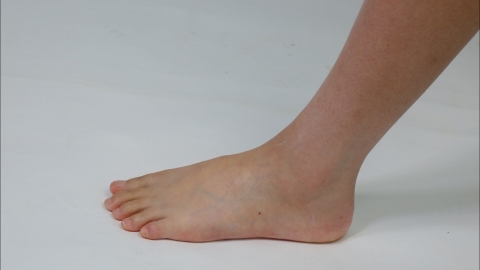What diseases may cause numbness in the soles of the feet?
Generally, the main causes of foot numbness include prolonged pressure, cold exposure, lumbar disc herniation, diabetic peripheral neuropathy, and lower limb arterial occlusive disease due to atherosclerosis. If foot numbness persists without relief, it is recommended to seek timely medical evaluation at a reputable hospital. Detailed explanations are as follows:
1. Prolonged Pressure
Remaining seated or standing for long periods or wearing tight shoes and socks can compress the blood vessels and nerves in the feet, leading to impaired local blood circulation and abnormal nerve conduction, which may cause temporary foot numbness. In daily life, avoid maintaining the same posture for long periods, get up and move for 5–10 minutes every hour, wear loose and breathable footwear, and soak your feet in warm water for 15 minutes before bedtime to promote foot circulation and relieve numbness.
2. Cold Exposure
Long-term exposure of the feet to cold environments can cause local vasoconstriction, reducing blood supply and affecting nerve sensitivity, which may result in foot numbness. It is important to keep the feet warm by wearing insulated shoes and socks when outdoors, avoid direct contact of the feet with cold objects, and alleviate numbness by rubbing the feet or applying heat to promote local blood circulation.

3. Lumbar Disc Herniation
Lumbar disc herniation can compress the nerve roots that control the lower limbs, impairing nerve conduction and causing foot numbness, often accompanied by lower back pain and radiating leg pain. For mild symptoms, medications such as ibuprofen sustained-release capsules, mecobalamin tablets, and vitamin B1 tablets may be used under a doctor's guidance to relieve symptoms, along with lumbar traction and physical therapy to alleviate nerve compression. In severe cases, surgical removal of the herniated disc material may be required to relieve pressure on the nerve roots.
4. Diabetic Peripheral Neuropathy
Long-term high blood sugar levels can damage peripheral nerves and blood vessels in the lower limbs, leading to impaired nerve conduction and poor circulation, causing foot numbness, often accompanied by reduced sensation and dry skin. Blood sugar levels should be strictly controlled, and medications such as metformin hydrochloride tablets, gliclazide MR tablets, and insulin injections may be used under medical supervision to regulate blood glucose. Additionally, medications like epalrestat tablets and mecobalamin capsules can be taken to nourish nerves and alleviate numbness.
5. Lower Limb Arterial Occlusive Disease
Atherosclerosis of the lower limb arteries leading to vascular narrowing or occlusion can reduce blood supply to the feet, causing ischemia and hypoxia in local tissues, resulting in foot numbness, often accompanied by coldness in the lower limbs and pain during walking. Under a doctor's guidance, medications such as aspirin enteric-coated tablets, clopidogrel bisulfate tablets, and rosuvastatin calcium tablets can be used to improve vascular health. In cases of severe vessel occlusion, balloon angioplasty of the lower limb arteries may be performed to restore blood flow to the feet.
In daily life, maintain moderate exercise such as walking or jogging to promote lower limb circulation, control body weight to reduce lower limb strain, maintain a balanced diet with reduced intake of high-fat, high-sugar, and high-salt foods, and regularly monitor blood glucose, blood pressure, and lipid levels to maintain the health of lower limb blood vessels and nerves.




